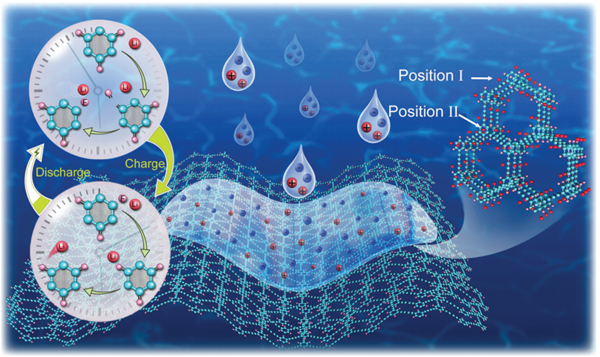With the rapid development of the wearable electronics and implantable medical devices, there is a growing demand for flexible batteries with high energy and power density as well as long cycle life. 2D materials are expected to be good candidate electrodes in terms of composition, topology, flexibility and other physical properties. However, Li ion diffusion parallel to the plane of natural 2D materials with compact atomic arrangement is limited by the steric hindrance, and diffusion perpendicular to the basal plane is hindered by the aromatic carbon rings, thus leading to a low energy and power density.
Recently, under the supervision of Prof. LI Yuliang, a research team led by Prof. HUANG Changshui fromQingdao Institute of Bioenergy and Bioprocess Technology(QIBEBT), Chinese Academy of Sciences (CAS), has rational designed and synthesized a new 2D carbon material named fluoride graphdiyne (F-GDY).
The researchers design the chemical structure on the basis of graphdiyne according to the main issues in recent flexible batteries. Firstly, the main framework is maintained for generating more storage sites for Li ions and providing electronic conduction channel. Secondly, fluorine atoms are used to replace some acetylenic bonds for improving Li ion diffusion situation on the perpendicular direction. Moreover, the C-F bond is beneficial for ameliorating the interfacial compatibility. (Figure 1)
In consequence, The experiments, together with theoretical calculations, show that extraordinarily high reversible capacity (1700 mA h g-1) and extremely stable cycle performance (9000 cycles) are achieved by the reversible transition between C–F semi-ionic bonds and ionic bonds at the plateaus of 0.9 V. This bottom-up strategy offers a versatile approach to the rational design of ultra-stable flexible 2D materials through solution-based processability for application in the efficient electrodes of high performance rechargeable batteries. (Figure 2)
The related work was published inEnergy & Environmental Science.

Figure1. The synthetic route and characterization of F-GDY. (Image by HE Jianjiang)

Figure 2. The illustration of Li storage mechanism in F-GDY. (Image by HE Jianjiang)
(Text by HE Jianjiang)